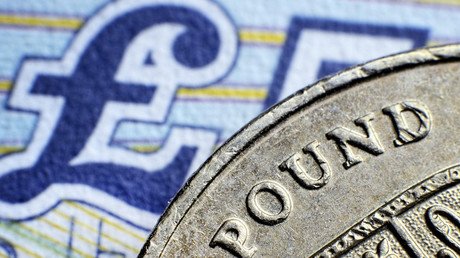20 years after the East Asian crash - is history repeating itself?

A run on the Thai currency 20 years ago triggered a financial crisis that devastated the economy of the entire region, sinking currencies in Thailand, Indonesia and South Korea; ultimately spreading as far as Russia and Brazil.
Far from ‘lessons being learned’, history looks worryingly set to repeat itself.
On July 22, 1997, Thailand’s Prime Minister Chavalit Yongchaiyudh announced the baht would free float. The Thai government lacked the foreign exchange reserves necessary to continue pegging the currency to the US dollar - and the result was a collapse of the baht to less than half its former value.
The contagion quickly spread to Thailand’s neighbors as panicked investors began selling off their stocks in other East Asian currencies. Within months, noted the Financial Times on the 2nd January 1998, the crisis had “laid waste to what was once the most dynamic part of the world economy” leading to a collapse of the currencies of Indonesia, Malaysia, the Philippines, and South Korea. Later that year, the economies of Russia and Brazil were severely hit by the impact of the crisis on commodity prices, triggering crises of their own.
Across the region, economic devastation reigned. Unable to refinance debts, companies of all sizes had their loans called in. But the collapse of the currencies meant the value of these debts, denominated in dollars, had increased exponentially. A wave of bankruptcies drove unemployment through the roof while governments hit by declining tax revenues, and IMF-imposed austerity were forced to cut back on social safety nets. At the same time, the collapse of currency values led to rapid inflation, forcing up the cost of basic essentials such as food and fuel. Poverty rates ramped up - and in Indonesia, the resulting social unrest even led to the overthrow of the government.
What had caused this devastation? In the years preceding the crash, the economies of East Asia had, under IMF tutelage, removed capital controls. This, in turn, had led to an influx of ‘hot money’ into those economies, as low returns in the developed world prompted investors to seek capital outlets elsewhere. As the Financial Times noted in January 1998, “between 1992 and 1996 net private capital flows to Asian developing countries jumped from $21bn to $101bn....What caused the inflow was largely the search for better returns by investors made insensitive to risk and hungry for profit by the Western bull market.” Those investors had been especially encouraged by the 1993 World Bank report “the East Asian miracle” praising the growth those countries had achieved. To keep their exports competitive, they had pegged their currencies to the then undervalued dollar. But things turned sour when the so-called ‘reverse Plaza Accord’ of 1995 brought about a major appreciation of the dollar, decimating the exports of the East Asian economies.
It took a while for this to ‘filter through’ to investors, but once it became apparent East Asian currencies and stocks were overvalued, the herd mentality took over. “As usual,” wrote the FT, “mania ended in panic.” Thailand, Indonesia, and South Korea were all forced to take billions of dollars in emergency loans from the IMF - coming, of course, with strict conditions, which exacerbated the crisis. As is standard with the IMF, recipient governments were forced to adopt tough austerity measures, effectively preventing them from doing anything to stimulate demand. But they were also forced to abolish all barriers on foreigners purchasing assets such as banks and property. As a result, Western capital was able to swoop in and buy up Asian infrastructure - some of the most modern plant and machinery in the world - for pennies on the dollar - as companies unable to meet their denominated debts were forced to sell their assets at rock-bottom prices. As Wade and Veneroso wrote, “the combination of massive devaluations, IMF-pushed financial liberalization, and IMF-facilitated recovery may have precipitated the biggest peacetime transfer of assets from domestic to foreign owners in the past fifty years anywhere in the world.”
For Professor Radhika Desai, this was “the most impressive exercise of US power the world had seen in some time”, providing, in the words of Peter Gowan, “a welcome boost for the US financial markets and through them for the US domestic economy” as “capital flows bypassed emerging-economy financial markets and went directly into the upward-moving US bond and stock markets”. Western policy had facilitated the crisis, exacerbated it, and profited immensely from it: for, as Peter Gowan has noted, “the US economy depends...upon constantly reproduced international monetary and financial turbulence” - while Wall St in particular “depends upon chaotic instabilities in ‘emerging market’ financial systems.”
With the Western world poised to ramp up interest rates, could it be that we are again on the verge of just such an episode? The parallels are worrying.
First of all, just as during the years prior to 1997, the past decade has seen a massive influx of capital into the developing world, exacerbated by the British-US-German-Japanese ‘quantitative easing’ (QE) programs.
According to the World Bank, “Over the four-year period between mid-2009 and the first quarter of 2013 [i.e. the first four years of the QE experiment], cumulative gross financial inflows into the developing world rose from $192 billion to $598 billion”, which, it noted, was “more than twice the pace compared to the far more modest increase of $185 billion between mid-2002 and the first quarter of 2006”.
Former Indian Foreign Secretary Shyam Saran, warned of the potentially destabilizing effects of this influx in 2013: “According to one estimate, about 40 percent of the increase in the US monetary base in the QE1 phase leaked out in the form of increased gross capital outflows, while in the QE2 phase, it may have been about one-third. This massive and continuing surge of capital outflows to emerging and other developing economies is having a major impact. Corporations, which have a sound credit rating, are taking on more debt, and increasing their foreign exchange exposure, attracted by low borrowing costs. Their vulnerability to future interest rate changes in the developed world and exchange rate volatility will increase.”
The Daily Telegraph has also picked up on this vulnerability, noting that “Nobody knows what will happen when the spigot of cheap dollar liquidity is actually turned off. Dollar debts outside US jurisdiction have ballooned from $2 trillion to $9 trillion in fifteen years, leaving the world more dollarized and more vulnerable to Fed action than at any time since the fixed exchange system of the Gold Standard.”
Even the World Bank has admitted the reversal of QE “is a central concern for developing economies, which have struggled to cope with the surge in financial inflows that they have experienced over the past several years, and are fearful that the renormalization of high-income monetary policies will be accompanied by a disorderly sudden stop in capital inflows.” Later the study concludes that “These fears were not unfounded.” Just as during the pre-1997 period, emerging markets are dangerously leveraged, with the influx of ‘hot money’ into the developing world leaving it exceptionally vulnerable to any action that might reverse this flow. And such action is almost certainly on the cards.
On July 18, The Times’ economics editor Philip Aldrick wrote that “In two months’ time, the US Federal Reserve is expected to begin the next phase in the greatest economic experiment of modern times. America’s central bank has signaled it may start unwinding quantitative easing in September with the piecemeal sale of the $3.5 trillion of bonds bought since QE’s 2008 launch. No one quite knows what happens next, but the gloomiest predict another financial maelstrom. One thing is certain. Borrowing costs will rise”. Indeed, he writes, “it’s already happening. Government bond yields, used to price everything from fixed rate mortgages to corporate loans to pension schemes, have jumped. Since June, the yield on ten-year UK gilts has risen from below 1 percent to 1.275 percent. The same is happening in US and German bonds. Against the backdrop of automatic global monetary tightening, a Fed decision to flood the market with more bonds would lift borrowing costs even higher.” In other words, we are entering an era of rising effective interest rates exactly like that which prefigured the 1997 crisis.
A second parallel is that the debts being accumulated in the global South are, again, largely denominated in dollars. In 1997, this was devastating as it meant that, as local currencies dropped in value, their dollar debts effectively escalated by the same amount; had the debts been denominated in local currency, the number of bankruptcies would not have been nearly so large.
To guard against a repeat scenario, therefore, the countries hit in 1997 began to issue debt only in their own currency: those wishing to invest would have first to convert their money into the local currency, and only then could they do so. As the years passed, however, complacency seems to have set in: to such an extent that, today, according to the Bank for International Settlements, non-bank borrowers in emerging markets have now accumulated more than $3 trillion in dollar-denominated debt. According to a report published by the bank last year, “The accumulation of debt since the global financial crisis has left EMEs [emerging market economies] particularly vulnerable to capital outflows. As private sector borrowing has led to overheating in several large EMEs, the unwinding of imbalances may generate destabilizing dynamics.” The report goes on to note that around $340 billion of developing country debt will be maturing this year, “creating a potential default risk if investors start pulling money out of emerging markets.”
All the warning signs are there. Writing for Bloomberg, Lisa Abramowicz wrote in November 2016 that “the debt of developing economies is positioned uniquely for pain.” Noting Adair Turner’s warning that "the large increase of emerging market debt, much of it denominated in dollars" is one of the biggest risks in the financial system right now, she added, “All that money is owed to somebody, and a failure to pay it back will cause big ripple effects. So as emerging markets come under stress, bond investors around the world should take note. As the dollar continues to strengthen, it's not a stretch to see how this developing-market debt sell off can worsen, having far-reaching consequences on markets around the world.”
Others have specifically drawn attention to the parallels with 1997. The Telegraph noted that Bill Dudley, head of the New York Fed, had “hinted that the Fed may opt for the fast tightening cycle of the mid-1990s, an episode that caught markets badly off guard and led to the East Asia crisis and Russia's default.” And the above quoted former foreign secretary of India, Shyam Saran, warned that “the Asian financial crisis of 1997/98 was, in part, triggered by an earlier version of QE pursued by Japan in the aftermath of the bursting of its property and asset bubble in the early 1990s. Then, too, the large inflow of low-cost yen loans led to the asset price bubbles, inflationary pressures and currency instability in the Asian economies.”
Read it and weep: QE, the largest transfer of wealth in history (Op-Edge by Dan Glazebrook) https://t.co/66OwHH0B10
— RT (@RT_com) July 22, 2017
Of course, triggering a new crisis by ramping up interest rates and selling off bonds - precisely at a time when a large portion of developing world debts are maturing - would hurt the West as well. Yet this seems to be precisely what is being planned. Because if a new crisis is inevitable - and I believe the inherent capitalist tendency towards overproduction means it is - it makes perfect sense to time it at a moment when the global South will be forced to bear the brunt. And, even if the US is hit, so long as everyone else is hit harder, that is a net gain for US power.
As the Telegraph wrote, “The US is perhaps strong enough to withstand the rigors of monetary tightening. It is less clear whether others are so resilient.” And, says Abramowicz, “While bonds globally are posting some of the biggest losses on record, debt of US, Germany, Japan and other large economies will eventually have natural buyers that can swoop in and support values.”
Fans of Breaking Bad will remember the memorable scene in which drug lord Gus Fring arrives at the mansion of his arch rival Don Eladio with a bottle of poisoned tequila disguised as a peace offering. Eladio is suspicious, so to prove its purity, Gus drinks the first shot. While the rest of the cartel is poisoning themselves, he heads to the bathroom to make himself sick. After nearly dying, he eventually recovers - while his rivals’ corpses lay strewn around the swimming pool. Is the US hoping to pull the same stunt - choking themselves, but fatally throttling everyone else in the process, so they can swoop in and pick up the pieces? It wouldn’t be the first time.
The statements, views and opinions expressed in this column are solely those of the author and do not necessarily represent those of RT.















